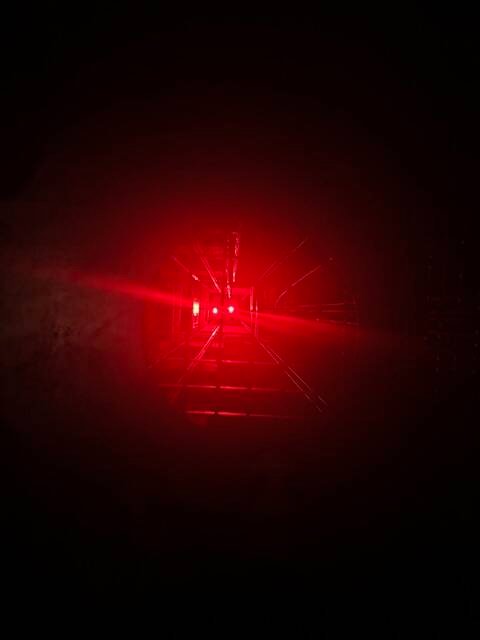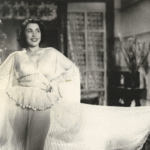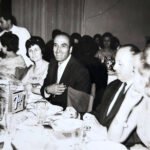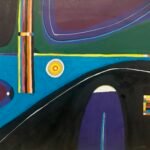An Article by DM (727 words, 4 min. read)
Beirut opened itself to design with quiet confidence. Across five locations, the city became a stage for renewal, a choreography of heritage, creativity, and collective imagination. We Design Beirut 2025, founded by Mariana Wehbe, in partnership with industrial designer Samer Alameen and the branding agency Bananamonkey, was more than an event; it was a movement. Through design, craft, and architecture, Beirut rediscovered its pulse made of memory and light, of structure and hope.
The Factory of Threads: Abroyan
At the Abroyan Factory, the story began with threads. Within its historic industrial halls, the design wove itself back into the city’s fabric. The space, once filled with the rhythm of machines, now echoed with the cadence of craftsmanship. With Threads of LifeTextiles became metaphors for resilience, soft yet enduring, fragile yet unbreakable. Here, Beirut’s essence unfolded as a woven narrative, spun by its artisans’ patience and their refusal to let beauty fade.
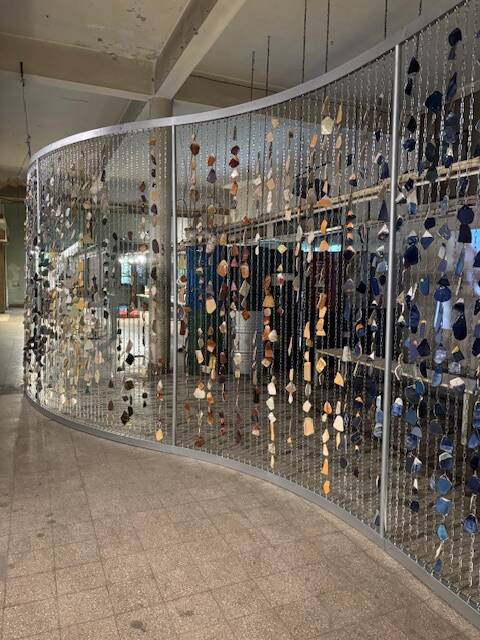





The Poetry of Stone: Roman Baths
At the Roman Baths, marble met light in a quiet conversation between time and transformation. Curated by Nour Osseiran and sponsored by Rania Malli, Of Water & Stone Reimagined marble in all its forms: raw, refined, fragmented, and fluid. Each stone carried the weight of ritual and renewal, each surface whispered continuity. The exhibition reminded visitors that the design, at its purest, listens to the earth before it speaks.

The Vertical Reflection: Burj El Murr
The Burj El Murr, once an emblem of Beirut’s fractured past, stood as a vertical reflection on conflict and rebirth.The youth-led exhibition Design In Conflict managed by Archifeed and curated by Teymour Khoury, Yasmina Abi Mahmoud, Tarek Mahmoud and Youssef Bassil, gathered young Lebanese talents from nine universities to explore how Architecture absorbs trauma and redefines meaning. The tower, with its unfinished body, became a space of dialogue where architecture was not about walls, but about courage, empathy, and the act of imagining again.

The Totems of Memory: Villa Audi
At Villa Audi, the exhibition Totems of the Present & the Absentcurated by Gregory Gatserelia, transformed design into contemplation. Fifty-one designers created totems that spoke to memory, loss, resilience, irony, and identity. Within the villa’s timeless setting, these objects became symbols of endurance, quiet, monumental, and deeply human. Beirut’s emotions were sculpted into form, and its silences found language.

The Precision of Steel: Naggiar Factory
In contrast, Philippe Naggiar’s work at the Naggiar celebrated the discipline of metal. Steel and iron, shaped with exceptional precision, became instruments of balance and strength. Every beam and joint carried an artisan’s devotion, turning industrial material into poetry. His mastery stood as proof that elegance lies in precision and that steel, when guided by vision, can reflect the warmth of human craft. Eleven Artists transformed their vision through the meticulous and precise work of the Naggiar craftmanship to realize monumental works as was evident by the Olive Tree of artist Missak terzian,

The Light of Beirut: Immeuble de l’Union
And then, the journey arrived at its crescendo: the Immeuble de l’Union, revived by Karim Nader Studio with the poetic lighting of Atelier 33. Union, A Journey of Light unfolded from the ground floor to the rooftop, tracing the transformation of a building, and a city, from shadow to radiance.
Light here did not decorate; it remembered. It slipped through cracks, caressed edges, and turned every scar into a shimmer. The experience was immersive, emotional, and quietly transcendent. Visitors moved through the space as if through the pages of Beirut’s own story, from ruin to rhythm, from silence to song.


One of Lebanon’s most prominent architects, Karim Nader approached the project with philosophical depth and restraint. His vision treated architecture as a dialogue between the old and the new, between what survives and what transforms. For Rare, renovation is not imitation but interpretation, a way to extend a building’s life without erasing its past. In his own words, This project is a “reprise,“ a second take, Not nostalgia, but continuity. He believes in making the old legible, safe, and luminous again, while preserving its soul.

Atelier 33’s lighting design completed this philosophy allowing the structure to breathe, to reveal its own quiet rhythm, to be seen not as restored but reborn.

Beirut, Reborn Through Design
This week, from October 22 to 26, Beirut rose through design, art, and collective imagination. Crowds filled the city’s streets and courtyards, architects, students, artists, collectors, and dreamers drawn by the promise of We Design Beirut. Under the vision of Mariana Wehbe and her collaborators, the city became a living exhibition: from threads to stone, from iron to light, every corner pulsed with creation.
We Design Beirut 2025 was indeed a cultural awakening. In the heart of the city, Union stood as its symbol, a luminous bridge between past and present, a manifesto of resilience through beauty. Beirut, illuminated once again, remembered how to dream and how to rebuild through art, design, and light.
